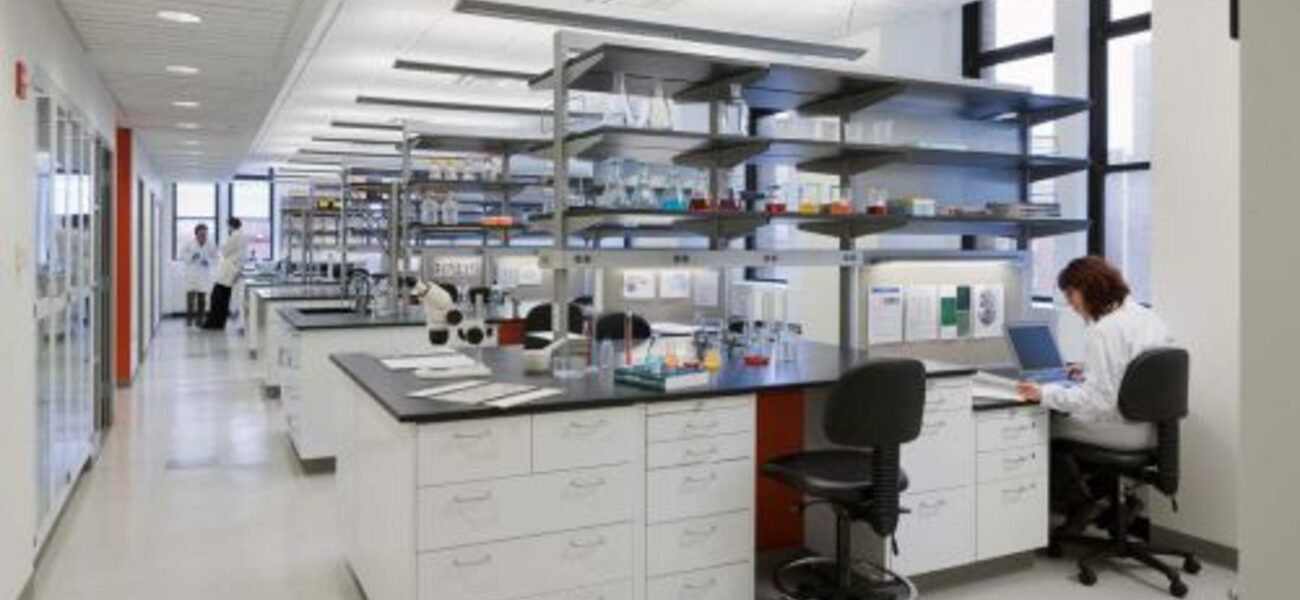Columbia University Medical Center (CUMC) is proving that extensive planning and looking beyond typical short-term measures can net significant reductions in greenhouse gas emissions, as well as cost savings, even in high-powered lab facilities. In only the third year of a 17-year project, CUMC has realized a 4 percent drop in greenhouse gasses, and a 15 percent drop in utility costs.
The ultimate goal is to cut campus greenhouse gas emissions 30 percent by 2025, explains Rachel Futrell, associate director for energy management and sustainability for CUMC. The University undertook the project in response to PlaNYC, a challenge initiated by Mayor Michael Bloomberg to reduce the city’s greenhouse gas emissions 30 percent from 2005 levels by 2030. Certain buildings, like hospitals and universities, were given an additional challenge to accomplish the plan in 10 years, by 2017.
“The question was, could an extremely dense, high-load medical center accomplish this goal?” says Futrell. “The traditional, easy energy conservation measures didn’t really apply for our campus. We can’t shut off laboratories at night. We can’t really change the temperatures. We can’t recirculate much of our air. We have an aging infrastructure. So it was quite a challenge.”
The CUMC Campus and its Energy Consumption
CUMC shares a 20-acre campus in the northwest corner of Manhattan with New York Presbyterian Hospital (a separate entity). CUMC is dominated by research laboratories, plus education and office space, in a dense, vertical setting with limited room for new development, notes Futrell.
The medical center has approximately 4 million sf over 14 buildings; eight are research facilities with about 75 percent of the space comprising laboratories. Electricity and steam power make up the bulk of the facilities’ energy usage. The medical center uses about 96 million kWh per year, with a 12 MW peak demand, 80 percent of which is located in the research buildings. CUMC facilities use more than 300,000 pounds of steam, more than a million therms of gas, and 400,000 gallons of oil.
“A good chunk of our core buildings were built in the 1920s and went through renovations in the 1960s,” says Futrell. “The remaining office and residential buildings were built in the 1960s and 1970s, and we have a few newer buildings built in the 1990s and 2000s.”
Creating an Energy Master Plan
In order to seriously examine reduction opportunities, CUMC hired Futrell as energy manager. The next step was putting together a campus-wide sustainable energy master plan, which they did using three phases: investigation, analysis, and preparation of the final master plan.
“It is key that the three components of this phase work together and in parallel so that information is shared and incorporated,” says Futrell.
CUMC’s investigation phase involved site work, interviews with staff, and utility evaluation.
The analysis phase involved a financial evaluation and engineering analysis. The financial evaluation included things like hedging, forward cost projections, and return on investment scenarios, says Futrell.
“This feeds to and from our engineering analysis, which covered energy conservation measures, demand reduction, LEED screening, and emergency preparedness,” she adds. “If you haven’t already, at this point it is important to discuss with your team how you are evaluating your business plans. What is the highest payback you’ll accept? What are you targeting for your return on investments? Do you have unique financial arrangements that affect your capability? All this is going to inform how you create this plan.”
For the final master plan, CUMC threw out everything that was not economically viable and developed a three-pronged implementation schedule: projects with a fast payback period of one to two years; projects with a medium payback of three to five years; and projects that needed additional investigation, which, if financially viable, would be implemented later.
“CUMC is a bit unusual in that we actually have a capital fund for infrastructure investment, over and above our operating budget. Because of this, it was easier to plan for funding,” notes Futrell.
Along the way, they had to alter the deadline for reaching their energy reduction goals from 2017 to 2025. The amount of capital investment required to meet the goal didn’t work with CUMC’s fiscal investment plans, says Futrell. They were also at a disadvantage because the university started PlaNYC about three years later than everyone else, and five years after the 2005 baseline.
Working Out the Details
When deciding specific projects to undertake, CUMC focused mainly on two factors: reducing greenhouse gasses and the simple payback.
Fast payback projects were not the traditional low-hanging fruit, such as changing to energy-efficient lighting and installing lighting controls, or occupancy-related savings like shutting systems down and using timers.
“We can still do those projects in certain areas and do incorporate them as regular construction proceeds, but they don’t make as significant an impact in our laboratory buildings as they would in an office building.”
Key projects in phase one focused on building management systems, the central chiller plant, and operations and maintenance.
The first project involved converting a building management system from pneumatic controls to digital controls. Although the project had a considerable price tag, the American Recovery and Reinvestment Act (ARRA) covered two-thirds of the cost, says Futrell, making the project more palatable to CUMC management.
The project has a net-effect annual savings of $500,000 per year, and with the incentive, the payback was less than a year.
“Since the project proved financially sound, we are doing a second building. It didn’t get quite as large of an incentive, but management approves because they understand the benefit.”
Some of CUMC’s buildings received chilled water for cooling systems from New York Presbyterian Hospital, but an audit showed CUMC had the capacity to bring that production in-house using its own chillers, as well as improving production efficiency by expanding heat exchangers for free cooling and optimizing the operating sequence.
Since air conditioning is one of the utilities operating year-round in a high-powered facility portfolio, they decided to bring in outside experts. Those experts found ways to minimize the necessary redundancies in the central plant, notes Futrell.
Bringing the chiller service in-house gave CUMC a one-time savings of $1 million by removing the service contract, and an additional $250,000 of avoided cost by making the production more efficient, she says.
For operations and maintenance, projects undertaken in phase one included adding lighting occupancy sensors and timers, leak repair, mechanical timers and temperature resets, and insulation. Payback was quick, traditionally around one year or less, especially when they bundled a higher-cost project with several lower-cost ones.
“This also helps to introduce or reinforce with maintenance staff the need for energy efficiency in day-to-day efforts,” says Futrell. “Operations and maintenance is a learned behavior and your biggest open-ended factor when doing a greenhouse gas reduction plan. You want to train and retrain your personnel.”
Planning for the Future
Not only did CUMC need to establish long-term plans and goals, but it also had to prepare for short-term needs and emergencies. Futrell made sure all emergency decision makers were included in the process for determining goals.
“We wanted to have an emergency plan in place to avoid ‘halfway technologies’—fixing things on the fly in a haphazard manner. It is expensive, and you end up re-doing the work correctly later on.”
While typical energy-saving methods were not feasible in most of CUMC’s older buildings, they could be employed in new construction. About 20 percent of the campus is undergoing renovations at any given time, so CUMC instituted sustainable design standards for new construction. After a critical asset lifecycle assessment, they created a scorecard to grade all mechanical, electrical, and plumbing systems on campus.
“We take this priority list and pair it with our financial capability and the master plan we already created to produce a greenhouse gas reduction program that is embedded within a campus investment plan. It not only addresses our most urgent needs, but also shows where we can get the most in greenhouse gas reduction and cost savings.”
The Program’s Progress and Lessons Learned
CUMC first started implementing PlaNYC in 2011 but didn’t see a reduction in greenhouses gasses and costs until 2012. For the end of fiscal year 2013, the university projects a 4 percent drop from the 2010 baseline and a 15 percent drop in utility costs from actuals. They are on pace to meet the goal of 30 percent reduction by 2025.
“Our budgeted utility drop costs have been even larger because we have a better understanding of our year-to-year costs and can project costs more accurately now,” says Futrell.
It’s also important that the people in leadership roles have the ability to see the plan through implementation, she adds.
Futrell advises anyone embarking on a similar plan to include a communications strategy; have a team member who is designated as the communication person. “This can be more time consuming than managing the energy efficiency projects. So you want to have a plan to manage expectations.”
Track and manage data, too. This not only helps monitor progress toward goals, it also is required when dealing with incentive programs.
Keep in mind that energy savings, greenhouse gasses, and cost savings don’t always trend together.
“It depends on the fuels you use, the rates you pay, and how you are changing their operation. Weighing this together, you might not always have projects that hit the big numbers on greenhouse gas reductions, but you can use them for reinvestment in future projects that will hit the target.”
Keep in mind three main points:
- Have a strategic plan based on quantitative data. Understand your systems and how they work.
- Look for the non-traditional projects with great paybacks. Many high-powered facility portfolios can take a different approach to traditional payback strategies, especially if they have investment capability.
- Take advantage of economies of scale by combining projects on related areas and systems. Work with all areas of the institution to make this happen.
Such projects are never complete, but constantly evolving, adds Futrell. “A plan created today wouldn’t be relevant in three or four years. Systems evolve, construction evolves, and the plan changes on a year-to-year basis as you learn more about your facilities.”
By Taitia Shelow
This report is based on a presentation Futrell made at Tradeline’s 2013 Lean Facility Lifecycle conference.

